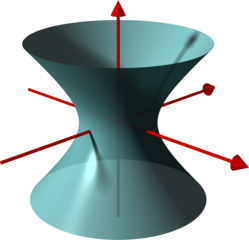
Continuing our series of interviews with maths students and early career mathematicians, we talk to Daniel Kaddaj who is studying at the University of Cambridge. He tells us about what drew him to maths, about random walks on unusual shapes, and about an exciting summer internship which allowed him to experience life as a maths researcher.
I've always enjoyed the satisfaction of solving puzzles, which naturally attracted me to maths. But it was the beauty and simplicity of rigorous abstract mathematical formulations, which give a level of precision unattainable in the physical universe and yet are applicable to it, that made me want to study the subject.

Daniel Kaddaj
At the moment I'm in my third undergraduate year, mainly studying probability theory and statistics. I hope to continue onto a fourth year for my Master's, and perhaps a PhD.
My summer internship involved a research project within the Mathematics Faculty. In many applications of statistics and probability theory you need to pick a collection of numbers at random. If you were only interested in the numbers 1 to 6 and you wanted each to have the same chance of coming up, then you could simply roll a die to pick a number, and roll it repeatedly to pick more than one number.
However, in most real-life applications you're choosing from a different pool of numbers and you might want some numbers to have a bigger chance of coming up than others — in other words, you want to sample from some probability distribution.
My project was essentially analysing a method for doing this, called the Langevin Monte Carlo algorithm. It involves constructing what is called a random walk, that is a sequence of steps, each of which is random in some way. But rather than taking those steps in the plane or the ordinary 3D Euclidean space we are used to from school, I was analysing how and if the method would work on different geometric objects called Riemannian manifolds.
An example of such an object to illustrate the difficulties that arise from this is a sphere. In 3D space, to take a step in a random walk you add the direction where you are going to your position to get to your destination (this is done using vector addition, find out more here). On a sphere, however, it isn't clear how you would "add" two points, and there are trade-offs between picking a method a computer can calculate and more accurately mimicking the Euclidean case. [You can find out more about Riemannian manifolds in this article.]
The first part of the project involved familiarising myself with required material, and then coding various examples of distributions on different manifolds such as ellipsoids or hyperboloids, to figure out what properties determine the algorithm's behaviour. This also provided code to perform a statistical method called Bayesian manifold regression, which was motivated by brain imaging analysis, where the task was to determine whether taking a drug affected a particular region of the brain.

An example of a hyperboloid.
For second part I worked towards extending a proof of how the algorithm works in the Euclidean case to a general manifold setting, with some conditions that needed to be figured out. As well as enjoying thinking about the maths, my experience as an intern was really helpful in giving me a flavour of what mathematical research is like.
Daniel's internship was part of the Summer Research in Maths programme and supported by the Cantab Capital Institute for the Mathematics of Information.
My typical day starts with a 30-minute walk to the maths department, which I like to spend listening to an audiobook, followed by lectures in the morning. Most afternoons I go through lectures from the morning to make sure I have understood them, often with others in the department, and work on problem sets. Sometimes I also have one or two supervisions - a chance to go through the problems and get them marked. In the evening, if I don't have other activities planned and depending on work deadlines, I might continue working on problem sets.
I remember a particular problem which I had no idea how to attempt when I first saw it. After spending a couple of hours over two days thinking of different approaches which largely didn't work but gradually simplified the task, I finally came up with a full solution. The satisfaction of looking back at the different helpful ideas I came up with which I wouldn't have been initially able to guess, but which made a seemingly insurmountable problem soluble, was one of my favourite mathematical moments.
Apart from maths, I'm really interested in history, so I like to read related books. Currently, I'm reading about the Plantagenet Kings. As for less academic things, I quite enjoy playing badminton, and hope to improve at ceilidh dancing.